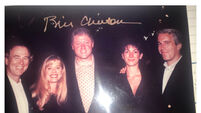ET phone home, modern earthlings ready for you now
Times have changed dramatically since 1961 when the US Congress was warned evidence of extra-terrestrials would lead to widespread panic, argued psychologist Dr Albert Harrison. First contact with ET, or the discovery of ancient alien relics on Earth or Mars, would probably be met with delight or indifference today, he believes.
Dr Harrison, from the University of California at Davis, US, wrote in the journal Philosophical Transactions of the Royal Society: “The discovery of ETI (extra-terrestrial intelligence) may be far less startling for generations that have been brought up with word processors, electronic calculators, avatars and cell phones as compared with earlier generations used to typewriters, slide rules, pay phones and rag dolls.”
People had been getting used to the idea of ET since the Seti (Search for Extra-Terrestrial Intelligence) project first began listening out for alien radio signals 50 years ago, said Dr Harrison.
Today, surveys suggested half the population of the US and Europe believe extra-terrestrials exist, and a “substantial proportion” were convinced aliens had already visited the Earth.
As long ago as the 1840s a popular New York newspaper reported on the discovery of “batmen” on the Moon. Later it was widely accepted that astronomers had found evidence of canals built by a dying civilisation on Mars.
In the 1960s scientists suspected that quasars and pulsars, galaxies and stars that emit powerful bursts of energy, might be intelligently controlled, said Dr Harrison. And in 1996 the American space agency NASA announced it had found fossil evidence of life on Mars, in the form of a meteorite containing alien bugs.
In North America and Europe at least, neither the discovery of an alien specimen nor the detection of a “dial tone at a distance” were likely to lead to “widespread psychological disintegration and collapse”.
The famous Orson Welles “Invasion from Mars” radio broadcast in 1937 did not send the majority of listeners into a panic, contrary to popular belief, said Dr Harrison.
Dr Harrison said people’s conception of what ET might be like broadly fell into three categories.
The “millennial model” portrayed kind and friendly “near immortals” who wanted to share their insight and wisdom with less evolved civilisations.
In contrast, the “catastrophic model” saw ET in the “Darth Vader” vein, as menacing, imperialistic and liable to conquer or annihilate the human race.
Lastly, the “postbiological model” conjured up the notion of artificial intelligence with unlimited brainpower that scored high on “strangeness”.
Evidence suggests that people “expect a millennial rather than catastrophic event, and feel prepared for the discovery,” said Dr Harrison.
Papers from a range of experts were published in a special edition of Philosophical Transactions devoted to extra-terrestrial life.














